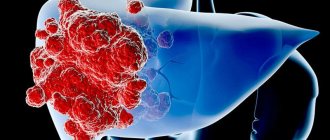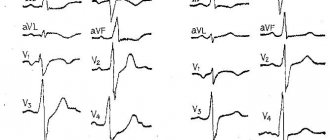Many people are familiar with the feeling of a dense lump in the throat, which is clearly felt when swallowing or talking. The reasons for this condition can be different, but most often they are not associated with objects getting into the throat. This is a sensation that is triggered by an infection.
A lump in the throat may appear at the very beginning as the first sign, but then other symptoms appear. Only an otolaryngologist can accurately determine the diseases that lead to such sensations and prescribe treatment.
General information
The feeling of a lump in the throat periodically appears in many people, and it can be associated with very different diseases and conditions.
This sensation is painless, but quite uncomfortable: the person feels as if there is a foreign body in his throat. In some medical sources, this condition is called pharyngeal ball. This symptom can be either temporary or permanent. In most cases, it is not evidence of serious illness. However, those people who experience this feeling regularly should not delay visiting a doctor. He will advise you on what kind of examinations need to be carried out. After all, a lump in the throat can be a sign of ENT diseases, gastrointestinal dysfunction, and even a symptom of neurological disorders. What reasons can provoke such a feeling and what to do to prevent such manifestations will be discussed in this article.
Associated symptoms
A lump in the throat that cannot be palpated (felt with your hand) is a common manifestation of many pathological processes. But it's far from the only thing.
Most often we talk about a whole complex of pathological signs:
- Feeling of lack of air. Dyspnea (increased number of respiratory movements per minute), suffocation (inability to make full movements due to obstruction). Usually this symptom has nothing to do with the lump, but is directly adjacent to it.
- A burning sensation in the throat, a sore throat that provokes an intense cough without sputum and mucous exudate.
- Feeling itchy in the throat. There is a desire to comb the affected area with the tongue. It is observed mainly in allergic reactions.
- Sensation of a foreign body in the airways and pharynx.
Pains of various localizations, heartburn, belching of air, belching of food and many other manifestations are also possible.
Pathogenesis
Today there are many unclear issues regarding the etiology and pathogenesis of this manifestation. Research confirms that this symptom is not only associated with local disorders occurring in the neck area. There is a connection between the pathology of the oropharynx and the esophagus, since these organs are anatomically interconnected. Studies have been conducted on the relationship of this manifestation with gastroesophageal reflux, according to the results of which it was classified as an extraesophageal manifestation of gastroesophageal reflux disease . However, at the moment this statement is controversial.
During clinical observations, it was also recorded that the sensation of a lump in the throat is often combined with signs of esophageal dyskinesia. Some studies note that the mechanism that provokes this symptom is associated with increased pressure in the cricopharyngeal muscle or impaired motor activity in the subpharyngeal space. In addition, the symptom can provoke drying of the throat in a state of emotional shock and stress. Similar symptoms are observed in other diseases - diffuse spasm of the esophagus, autoimmune myositis , myasthenia gravis , due to the appearance of tumors in the neck, etc. But in general, there is no consensus on the nature of the lump in the throat at the moment.
Why do they occur in healthy people?
If a person is healthy, then unpleasant belching of air and a lump in the throat are accompanied by factors associated with poor nutrition. What could be the reasons:
- overeating – more often occurs with irregular (less than 3 times a day) meals;
- quick swallowing - when in a hurry or having a snack on the run;
- insufficient chewing - which is necessary to completely envelop pieces of food with saliva;
- air ingress - this happens when talking while eating;
- consumption of carbonated drinks, smoked meats, canned vegetables;
- the use of physical activity immediately after a heavy snack.
In a healthy person, conditions associated with belching and a lump in the throat quickly disappear and do not require drug intervention. If these manifestations are observed constantly, then they can serve as harbingers of the disease.
Classification
Since this symptom can be a sign of a number of diseases, there is no usual classification in this case. When it comes to this symptom caused by neurosis , the following types are distinguished:
- Anesthesia - sensitivity in the throat area decreases or completely disappears, there is tension in the larynx, difficulty swallowing food and saliva.
- Hypoesthesia - symptoms resemble those of anesthesia, but they are more pronounced. The sensitivity of the throat decreases, and discomfort is felt during swallowing. If such symptoms do not disappear for a long time, this can lead to asphyxia by water or food.
- Hyperesthesia – spasm and increased sensitivity are noted. The patient has difficulty eating, speaking and even breathing. This condition can develop after experiencing stress.
- Hyperalgesia – there is regular pain in the pharynx and throat, aggravated by eating and drinking water.
- Paresthesia - may be manifested by sensations of the presence of a large foreign body in the throat. Sore throat worsens while eating.
Physiological reasons
There are actually very few physiological reasons. By and large, it all comes down to a psychosomatic spasm of the larynx.
This happens due to stress, when a huge amount of corticosteroids (hormones of the adrenal cortex) are released into the blood.
Most often, representatives of the weaker sex, impressionable individuals, representatives of both sexes with an unstable nervous system are susceptible to the development of this symptom (everyone, most likely, knows the feeling of a lump in the throat during intense emotional experiences).
We are talking about a variant of the physiological norm. There are many more pathological reasons.
Causes of feeling a lump in the throat
Speaking about why there is a lump in the throat constantly or periodically, it should be noted that the reasons for the feeling of a lump in the throat can be very different.
This sensation, which persists for a long time, can be provoked by an inflammatory process in the pharynx. As the inflammatory process develops, severe swelling appears, which creates the impression of a lump when swallowing. This condition can be caused by acute and chronic tonsillitis , laryngitis , pharyngitis .
This symptom is also characteristic of thyroid diseases - thyroiditis , endemic goiter , etc. This is a common sign of the thyroid gland in women and men.
A lump in the throat after eating, as well as nausea and heartburn may indicate diseases of the gastrointestinal tract, in particular its upper sections. A lump in the throat and belching of air after eating often occur when the lower alimentary sphincter is weakened. As a result, after a meal there is a constant belching of air and a feeling of obstruction in the throat. Gastroesophageal reflux, that is, the reflux of gastric contents into the esophagus, provokes not only discomfort in the throat, but also cough, as well as other unpleasant symptoms. A lump in the throat can be felt with gastritis , when this disease worsens. In this case, more precise causes of the problem must be determined by visiting a gastroenterologist.
A common phenomenon is a lump in the throat during neurosis. Neurosis of the pharynx develops against the background of strong excitement, experienced stress - that is, on a nervous basis. The so-called nerve lump can cause a person to have difficulty swallowing saliva and even have difficulty breathing. VSD (vegetative-vascular dystonia) can also lead to the sensation of a foreign body in the throat, making it difficult for a person to breathe. At the same time, very often patients do not initially assume that the cause of such manifestations is psychosomatics, and undergo a series of examinations without discovering the root of the problem.
Sometimes a lump in the throat with osteochondrosis of the cervical spine . Very often, with osteochondrosis, a feeling of stiffness develops in the upper spine, which can periodically cause discomfort in the throat. But if spondylosis with the proliferation of spondylophytes , this can lead to discomfort in the throat, since such a formation puts pressure on the larynx. True, such a phenomenon is rare.
The cause of this symptom may be the development of a benign tumor or cancer. The appearance of tumors in the pharynx area leads to pressure and a feeling of constriction. In this case, it is very important to visit an oncologist as soon as possible and begin treatment.
Often women complain of a similar symptom during pregnancy . Since during the period of bearing a baby the body undergoes serious restructuring, such a feeling can be a consequence of toxicosis , allergic manifestations, emotional stress, etc.
In addition to the listed reasons, this symptom can manifest itself as a result of endocrine disorders, autoimmune diseases ( Sjogren's syndrome , scleroderma ), when the patient's salivation decreases or completely stops.
Also, the cause of this symptom may be traumatic effects during endoscopy or when eating rough food.
Diagnostics
In addition to a visual examination of the patient by an ENT doctor, general and biochemical blood tests, in some cases additional tests are prescribed:
- X-ray with barium (radiopaque mixture). In the process of using this method, the doctor watches how food passes into the esophagus at the time of swallowing. To do this, an x-ray is taken using a contrast agent. This substance is a chalky solution that a person swallows, and the process itself is filmed either by fluorography or a series of different photographs. This method determines the presence of narrowing of the esophagus due to certain reasons.
- Esophagogastroduodenoscopy (EGDS). The examination is carried out under light anesthesia, as it suppresses the swallowing reflex. A tube with light is inserted into the esophagus, and the doctor sees the condition of the walls of the esophagus - erosion, redness, ulceration, and so on.
- Ultrasound of the thyroid gland. The method identifies nodules on the thyroid gland that can put pressure on the larynx.
In some cases, an additional ultrasound of the cervical spine is performed. This reveals the presence of an intervertebral hernia, which also causes unpleasant discomfort when swallowing.
Symptoms of a lump in the throat
Those who are bothered by the feeling of a lump in the throat can be divided into two groups: in some patients this condition is a consequence of somatic diseases, in others a so-called nervous lump in the throat develops.
- If such sensations are associated with inflammatory diseases of the pharynx, in addition to the feeling of a coma, the patient is bothered by a sore throat, the temperature may rise, and symptoms of general intoxication of the body .
- With cancer pathology, there is pain in the neck, pain when swallowing, high fatigue, loss of appetite and weight.
- In case of gastrointestinal dysfunction, in addition to the sensation of a lump in the throat, there is heartburn , cough, stomach pain, belching , and a feeling of heaviness after eating.
- With osteochondrosis of the cervical spine, dizziness , headache, as well as pain in the neck, back, and stiffness of movement may occur
The sensation of a lump in the throat as a symptom of pharyngeal neurosis may be accompanied by the following manifestations:
- Dryness of the pharyngeal mucosa due to decreased saliva secretion.
- Paroxysmal cough.
- Hoarseness of voice that persists for a long time. A complete loss of voice is possible, which occurs after a hysterical attack.
- The so-called imaginary swelling of the neck. A person constantly feels the neck area, trying to find lumps and tumors on it.
What to do if you have a lump in your throat
Since discomfort can occur as a result of many diseases, to find out the reason why there is a lump in the throat, it is necessary to pay a visit to a medical facility. Initially, it is recommended to visit a therapist, who, based on the existing symptoms, will refer you to the appropriate specialist:
- endocrinologist;
- ENT;
- psychotherapist;
- gastroenterologist;
- oncologist;
- to a vertebrologist.
To make a diagnosis, a set of diagnostic measures is used, the choice of which depends on the accompanying symptoms. The feeling of a lump in the throat may require the following manipulations:
- blood test, including testing for thyroid hormones;
- oropharyngoscopy (examination of the throat and oral cavity);
- Ultrasound of the thyroid gland;
- X-ray examination of the cervical spine;
- MRI or computed tomography.
The choice of treatment is based on the diagnosis and involves getting rid of the underlying disease causing the coma. Of course, any problem is easier to prevent, so if you don’t want to experience an uncomfortable feeling, it is advisable to adhere to some preventive measures:
- treat any pathologies of the throat, esophagus and stomach in a timely manner;
- avoid stress and anxiety;
- do not eat too hot or very cold food (drinks);
- practice moderate activity (physical education, fitness);
- stop smoking;
- periodically undergo medical examination and monitor the thyroid gland;
- protect the oropharynx from smoke and various harmful substances.
Important! A lump in the throat can be a symptom of serious pathologies, so do not self-medicate and visit a doctor in a timely manner.
Tests and diagnostics
If such a feeling is repeated frequently, it is necessary, first of all, to visit a therapist and tell him about the symptoms that are occurring. The doctor, first of all, conducts an examination and questioning, and also refers the patient to laboratory tests. The results obtained in most cases make it possible to determine the cause of the manifestation and refer the patient to a specialized doctor.
During the diagnostic process, the following studies can be carried out:
- Esophagography or videoesophagography.
- Estimation of swallowing time.
- Ultrasound.
- X-ray of the chest organs.
- Esophageal manometry.
- Laryngoscopy.
- Esophagogastroduodenoscopy.
- Daily pH impedance monitoring - to assess the severity of gastroesophageal reflux.
- MRI or CT.
If there are no signs of somatic diseases, the patient is examined by neurological specialists.
Treatment with folk remedies
There are many folk remedies that help improve the condition of people who periodically feel a lump in their throat. Any thematic forum or other resources contain a lot of advice on this matter. However, it is advisable to use such methods as auxiliary means that are used in parallel with the main treatment and after approval by a doctor. In addition, the effectiveness of a particular method depends on the cause of the disease.
- If we are talking about a symptom associated with nervous tension, then relaxing baths with essential oils will be useful. The water should be warm, you can choose the essential oil as desired and add 3-4 drops to the water.
- Soothing tea . It is also useful for nervous tension. This tea may contain mint, lemon balm, valerian, and motherwort.
- Collection of herbs . It contains mint, oregano and St. John's wort in equal proportions. 2 tbsp. l. The mixture needs to be poured with 0.5 liters of boiling water and boiled for 2 minutes. After half an hour, strain and drink with honey 3 times a day. This tea effectively calms the nervous system and relaxes the muscles of the larynx.
- Collecting herbs is the second option . Chamomile, motherwort, marigold flowers, valerian root, rose hips, hawthorn flowers are mixed in equal proportions. 2 tbsp. l. the mixture is poured with 0.5 liters of boiling water and cooked for 40 minutes. in a water bath. Drink tea several times a day with honey. It helps to calm down and relieve the effects of stress.
- Collection of herbs for a sore throat . If we are talking about an inflammatory process in the larynx, anti-inflammatory tea will be useful to help relieve swelling. To prepare it, mix 1 tsp. chamomile, sage and linden, pour the mixture with 600 ml of boiling water and infuse in a thermos. Tea should be drunk warm throughout the day.
- Cranberry juice . It effectively relieves swelling and has antipyretic properties. To prepare, you need to crush a third of a glass of cranberries and pour 2 tbsp. boiling water After 20 minutes, strain and drink warm without sugar.
- If the cause of a lump in the throat is gastrointestinal diseases, it is recommended to drink decoctions and infusions that promote digestion. For heartburn, prepare a decoction of plantain leaves, marshmallow root, chamomile flowers, lemon balm and oregano. To do this, take 1 tsp. each component, add 1 liter of water and cook in a water bath for half an hour. You should drink the product in small portions 5-6 times a day.
- Anti-inflammatory collection . Mix 5 parts fennel seeds, 3 parts linden inflorescences, 9 parts chamomile. Pour 800 ml of boiling water and leave in a thermos. Drink half a glass before meals.
Diagnosis and treatment
A doctor can identify the cause and make a diagnosis after examination.
If a patient complains, the doctor first collects anamnesis and conducts an examination. It is necessary that the patient accurately describe his sensations, say how long ago they began to appear and with what intensity they occur. Then the doctor will examine the throat for swelling, redness, ulcers, etc.
In most cases, these procedures are sufficient. But for a more detailed examination, laryngoscopy (examination of the larynx using a special magnifying technique) may be prescribed. If there is a suspicion of tumor formation, an x-ray or CT scan is prescribed. These are quite informative procedures for making a diagnosis. For problems with the stomach and esophagus, examination with an endoscope is recommended.
After an accurate diagnosis has been made, treatment for the throat is prescribed, usually complex:
- Local medications. Various local sprays, lozenges, and aerosols will help relieve discomfort, swelling, and soreness. In most cases, pharmaceutical preparations not only eliminate symptoms, but also promote recovery: they contain anti-inflammatory and antibacterial components.
- Rinsing. The rinsing procedure can be carried out with folk remedies or special preparations (Miramistin, Lugol, Furacilin). This is a fairly effective method in the fight against throat diseases.
- Antibiotics. Antibacterial drugs are necessary for sore throat and other bacterial infections, when it is difficult to cope with local remedies. Antibiotics do not quickly eliminate symptoms such as a lump in the throat, but they fight the causative agent of the disease itself, preventing the development of serious complications. Approximately on days 3-5, the first relief occurs, the severity of symptoms decreases if the drug is chosen correctly.
- Antipyretic. It is recommended to lower the temperature only if it is above 38 degrees. However, hyperthermia can lead to aches, chills, and weakness, so you can relieve unpleasant symptoms with the help of antipyretic drugs.
- Washing the tonsils. This procedure is usually carried out in clinics. Using special cannulas, purulent plugs and plaque from the tonsils are washed out. This helps relieve swelling, reduce inflammation and speed up recovery from sore throat.
The patient may also be recommended bed rest and a gentle diet. It is necessary to exclude everything highly salty, spicy and hot, so as not to injure the mucous membrane of the throat.
Traditional treatment
Gargling will help to quickly eliminate the unpleasant symptom.
If the disease is just beginning and there are no other serious symptoms besides a lump in the throat, traditional medicine can significantly alleviate the patient’s condition. However, it is worth distinguishing between sensations in the throat.
If it is difficulty swallowing and soreness, then traditional medicine can help. If you feel that it is difficult to breathe due to swelling, it is better not to resort to herbs and decoctions, but to consult a doctor.
Among the folk recipes against a lump in the throat are the following:
- Soothing tea. As you know, a lump in the throat can appear due to neuroses and stress. In this case, black tea with lemon balm, mint, valerian, and motherwort would be an excellent remedy.
- Chamomile and calendula. The dried herb is mixed in a cup and poured with boiling water. The finished broth should be filtered and cooled. The result is a solution for gargling. It perfectly cleanses the mucous membrane, softens it, eliminates dryness and soreness, and helps relieve inflammation.
- Apple vinegar. A solution of apple cider vinegar is also good for relieving inflammation. To prepare such a rinsing solution, one teaspoon per glass of clean water is enough. You need to choose your vinegar carefully so as not to confuse it with regular vinegar with the addition of apple juice.
- Propolis. If you are not allergic to propolis, it can be a real salvation. Propolis tinctures are sold, which can be used in different ways: prepare solutions for rinsing or take orally. To relieve inflammation and increase immunity, it is recommended to add a little propolis to warm milk and drink it at night.
- Nasal rinsing. In some cases, swelling of the nasopharynx is easier to relieve by rinsing the nose. This is done with a solution of salt or soda. If the disease is accompanied by rhinitis, this remedy will be especially useful. Propolis solution can also be used to rinse the nose.
It must be remembered that serious infections require drug treatment. Traditional medicine serves as an excellent addition to the main therapy, enhances the effect of drugs and speeds up recovery, but they should not replace antibiotics and other medications. You also need to consider the possibility of an allergic reaction when using herbs.
First aid
- If a person has a feeling of a lump in the throat associated with stress, he needs to try to calm down and switch his attention to something else.
- Feelings of fear can be reduced by drinking some water. In this case, you need to take small, even sips.
- You should not smoke, shout or speak loudly in this state.
- In case of gastroesophageal reflux disease, it is not recommended to take a horizontal body position immediately after eating.
- If a lump in the throat is a consequence of an inflammatory process in the throat, special lollipops and warm drinks will help.
Diagnostic measures
Diagnosis is not very difficult, despite the multiplicity of possible causes. First of all, it is recommended to consult a therapist.
Only then may consultations with specialized specialists (gastroenterologist, neurologist, otolaryngologist or pulmonologist) be required.
The following diagnostic measures are prescribed:
- General blood analysis. To exclude a possible inflammatory process in the affected area. If leukocytosis, a high erythrocyte sedimentation rate, is present, you need to look for the root of the problem in inflammation. With eosinophilia, there is a high probability of helminthic infestation or, more likely, allergies.
- General urine analysis. Also used to diagnose problems with the body, but is less informative.
- Examination of the thyroid gland by administering a radioisotope solution intravenously (scintigraphy). This is a reliable diagnostic method.
- FGDS for examination of the esophagus and stomach.
- X-ray of organs in various projections and MRI to detect osteochondrosis.
- Comprehensive ENT examination, including laryngoscopy and other methods.
In the system, these measures are quite sufficient to make and verify the diagnosis.
Prevention
It is advisable to adhere to the following rules of prevention:
- Walk outdoors every day and lead an active life.
- Treat all diseases in a timely manner, avoid complications of inflammatory processes, gastrointestinal diseases, and thyroid diseases.
- Avoid smoking and inhaling irritants. Use personal protective equipment when working in dirty, smoky rooms.
- Do not overload the vocal cords.
- Humidify the air in the room.
- Maintain a healthy daily routine and practice proper rest.
- Provide the most balanced diet possible.
During pregnancy
A lump in the throat during pregnancy is a common occurrence, because during the period of gestation, a woman’s body undergoes very serious changes. As a result, the feeling of a coma during pregnancy may appear against the background of the following conditions of the expectant mother:
- toxicosis;
- strong emotional stress;
- gastrointestinal dysfunction;
- allergic reactions;
- cold.
If the reasons for this manifestation are established and they are not serious, the doctor will tell you how to alleviate the condition. However, sometimes this condition can be a symptom of serious pathologies (endocrinological diseases, neoplasms) that can affect the health of the fetus and the expectant mother. Therefore, if you feel this way, it is better to immediately tell your doctor about it.
Symptoms
In addition to the pronounced signs of a lump in the throat, in which it is difficult to breathe and it is painful to swallow not only food, but also saliva, there are other symptoms, such as:
- sore throat after eating;
- difficulty eating solid foods;
- constant anxiety;
- change of mood;
- increased blood pressure;
- tightness;
- soreness;
- increase in heart rate;
- oxygen deficiency and, as a result, attacks of suffocation;
- nausea;
- stomach upsets;
- pain in the chest and heart, often moving to the lower back and back;
- muscle weakness;
- fever and increased sweating, and in some cases, on the contrary, chills;
- headaches of varying intensity;
- feeling of heaviness in the limbs.
In addition, the person is constantly nervous because he believes that the lump in the throat is an oncological tumor. Thus, it turns out that the person himself worsens the condition, since the nervous state only increases the intensity of the symptoms.
During pregnancy, signs of a lump in the throat can occur at any stage and accompany the woman until childbirth. Most often, it is those representatives of the fairer sex who turn to doctors who are carrying a child. This is due to the fact that during pregnancy all a woman’s senses are heightened, and what she would not pay attention to in everyday life causes anxiety at such a time. Therefore, she tries to identify the cause of this feeling and get rid of it.
Diet
Diet for sore throat
- Efficacy: therapeutic effect after 3-5 days
- Lead time: 5-7 days
- Cost of products: 1500-1600 rubles. in Week
Diet for GERD
- Efficacy: therapeutic effect after 10 days
- Timing: constantly
- Cost of food: 1300-4300 rubles per week
Diet for the nervous system
- Efficacy: therapeutic effect after 2 months
- Timing: constantly
- Cost of food: 1700-1800 rubles per week
Proper nutrition can be a factor that directly affects the patient’s condition. Sometimes, by adjusting it, you can get rid of the unpleasant feeling.
If the unpleasant sensation is caused by diseases of the gastrointestinal tract, it is important to adhere to a gentle diet, excluding from the menu all foods that can cause heartburn. First of all, you need to exclude fried foods, smoked foods, and canned foods. You should eat small meals, and the last meal should take place no later than three hours before the night's rest.
If we are talking about a sore throat, you should exclude any foods that irritate inflamed mucous membranes. You need to exclude sour foods, citrus fruits, allergenic berries and fruits. It is also advisable to avoid fatty and fried foods. In addition, it is necessary to exclude solid foods from the diet, which can irritate the mucous membranes. Prohibited are seeds, hot spices, soda, canned food, smoked foods, and fast food.
If a symptom manifests itself due to nervousness, it is necessary to adhere to a diet that helps stabilize the emotional state.
Effect of taking medications
Unpleasant symptoms of belching and a lump in the throat are sometimes accompanied by prolonged use of medications.
Such medications may be:
- Diclofenac (an anti-inflammatory drug not prescribed for gastrointestinal problems);
- Mesulide (strong analgesic, but contraindicated for ulcers);
- Aspirin, other painkillers and non-steroidal anti-inflammatory drugs;
- Prednisolone, Medrol (used for arthritis, gout, rheumatism, bronchial asthma, ulcerative colitis, but prescribed with caution for myocardial infarction, and gastric bleeding is also considered side effects);
- estrogen (female sex hormones) and oral contraceptives;
- antibiotics (Erythromycin, Tetracycline);
- some medications for hypertension.
Many drugs, if used incorrectly, can affect the normal functioning of the body's digestive system and irritate the mucous membranes, causing dysfunction of the gastrointestinal tract.
Consequences and complications
In order to prevent the development of serious complications, it is important not to ignore the discomfort that manifests itself when you feel a lump in the throat, and immediately contact a specialist.
- With diseases of the digestive system, the condition can be complicated ulcers , internal bleeding, narrowing of the esophagus, etc.
- , otitis media bronchitis , pneumonia , etc. can develop
- If we are talking about pharyngeal neurosis, then in some of its forms the patient runs the risk of choking on saliva or food. His condition is also complicated by psychological trauma.
- Malignant neoplasms in the absence of timely treatment lead to the spread of the process, the appearance of metastases and death.
Treatment
Since there are many reasons for the appearance of a lump in the throat (nervous, somatic), you should first contact a therapist. Based on the existing symptoms, the doctor will refer the patient for a consultation with an ENT specialist, endocrinologist, gastroenterologist, or vertebrologist.
Sometimes people try to cope with the problem on their own. Some prescribe unnecessary medications to themselves, others go to the other extreme: they let the matter take its course - maybe it will resolve itself. Some people try to get rid of the lump by swallowing rough food or drinking huge amounts of water. Unfortunately, the result of such self-medication is lost time. Of course, it is possible that the condition will normalize on its own, especially if it was caused by nervous reasons. But for such confidence it is necessary to exclude somatic ailments.
After determining the cause of the disease, the doctor will tell you how to get rid of the lump in the throat. Depending on the type, the main groups of drugs are distinguished:
- anti-inflammatory drugs - Nise, Diclofenac, help cope with back pain;
- antipyretics – Ibuprofen, Nurofen, Paracetamol;
- antispasmodics – No-shpa, Drotaverine;
- tablets to replenish iodine deficiency - Yodomarin, Iodbalance;
- sedatives – tincture of motherwort, valerian, Nervo-Vit, Apitonus-P;
- antibiotics – Amoxiclav, Amoxicillin, prescribed for bacterial infections of the nasopharynx;
- antiviral drugs - Remantadine, Tamiflu;
- antihistamines - Tavegil, Suprastin, eliminate swelling and other manifestations of allergies;
- medications to eliminate belching, heartburn, improve digestion - Rennie, Almagel;
- pain-relieving ointments – Chondrogard, Dolobene;
- nasal drops – Vibrocil, Naphthyzin, Grippferon.
Important! A timely visit to a specialist will solve the problem as soon as possible and help prevent possible complications.
List of sources
- Ivashkin V.T., Sheptulin A.A., Trukhmanov A.S. and others. Diagnosis and treatment of gastroesophageal reflux disease. Ministry of Health of the Russian Federation: A manual for doctors. 2003. 30 p.
- Zavictorina T.G. Pharyngolaryngeal reflux and gastroesophageal reflux disease in children with chronic diseases of the larynx. Ross. Journal of Gastroenterol. hepatol. coloproctol. 2008. T. 18. No. 3. P. 78-83
- Pluzhnikov M.S., Lavrenova G.V., Nikitin K.A. Sore throat and chronic tonsillitis. St. Petersburg: Dialogue, 2002. pp. 15-22.
- Svyadosch A. M. Neuroses. Guide for doctors. St. Petersburg: Peter Publishing, 1997. - 448 p.










